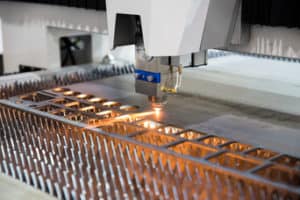Creating a Future-Ready Center with Modern Machining Solutions
Within the current rapidly evolving production landscape, the need for accuracy and efficiency in manufacturing has never been more critical. While businesses aim to improve their competitive edge, investing in state-of-the-art technology is crucial. Core to this transformation is the integration of contemporary cutting solutions that not just simplify production processes and also meet multiple material requirements. Amongst these cutting-edge methods, laser and waterjet cutting technologies are prominent, offering unparalleled accuracy and versatility for a wide range of applications.
The incorporation of laser and waterjet cutting systems into manufacturing environments positions businesses to fulfill the requirements of a forward-looking market. These cutting-edge techniques enable manufacturers to achieve detailed designs with reduced waste, optimize resource usage, and enhance overall efficiency. As industry moves towards more sustainable methods, incorporating these technologies not only aligns with eco-friendly goals and also empowers organizations to deliver top-notch products effectively. Embracing such technologies will be important for businesses looking to succeed in the competitive industrial sector.
Merits of Laser Cutting Technology
This cutting technique provides exceptional precision and precision, making it an perfect choice for complex patterns and elaborate forms. The method utilizes a concentrated beam of light to melt or evaporate material, resulting in smooth edges and minimal kerf width. This high level of precision reduces waste and lowers the need for further finishing processes, thus improving overall productivity in production processes.
Moreover noteworthy benefit of laser cutting is its flexibility. It can efficiently cut a variety of materials, including aluminum, synthetics, lumber, and composite materials. This capability allows manufacturers to manage diverse projects without the need for various machines, streamlining production workflows. As sectors continue to evolve, the capability to work with different materials becomes increasingly valuable in addressing the demands of modern creativity.
Moreover, laser cutting is extremely automatically operated and can be easily integrated into current production systems. laser and waterjet cutting service leads to faster turnaround times and improved productivity, as well as consistent quality across multiple runs. The ability to quickly adjust settings for different materials and gauges without human intervention contributes to the flexibility of laser cutting, making it an crucial tool in building a forward-thinking facility.
Advantages of Water Jet Cutting
Waterjet cutting offers considerable adaptability, enabling it to work with a variety of substances including metals, glass, stone, and plastics. This adaptability makes it an superior choice for sectors that require exact cuts in varying thicknesses and types of materials. In contrast to traditional cutting methods that may be limited by the substance, waterjet cutting can create complex designs and complex shapes without the need to concern oneself about the physical properties of the substance being used.
Another significant benefit of waterjet cutting is its ability to produce clear and precise cuts with minimal material loss. The process utilizes high-pressure water combined with abrasives, which results in edges that often require minimal secondary finishing. This accuracy reduces waste and enhances material utilization, thereby leading to cost savings in both time and resources. Additionally, the lack of thermal distortion means that the structural integrity of the material remains preserved, preserving its properties and ensuring consistent performance.
Lastly, waterjet cutting is an eco-friendly option compared to alternative cutting techniques. The primary energy used is water, and the process generates very little airborne pollutants or harmful byproducts. Since there is no thermal distortion, it also eliminates the need for chemical coatings or treatments after cutting. This green approach not only benefits the environment but also aligns with the growing trend of eco-conscious manufacturing practices, making water jet cutting a progressive choice for modern facilities.
Integrating Trimming Solutions for Performance
The incorporation of state-of-the-art machining solutions such as laser and water jet cutting services plays a pivotal role in improving the overall effectiveness of production processes. By utilizing the exactness and speed of these technologies, factories can substantially reduce material waste and manufacturing time. Laser-based cutting is known for its ability to create intricate designs with superior accuracy, making it suitable for a range of materials. On the other hand, water jet cutting is perfect for denser materials and sensitive substrates, providing a smooth cut without temperature-sensitive zones.
Implementing a hybrid approach that merges both laser-guided and waterjet cutting allows facilities to react more adeptly to varying project demands. This adaptability not only optimizes production but also improves resource allocation, as operators can select the most efficient cutting method for each task. Moreover, combining these technologies can lead to efficient workflows, cutting down on downtime and ensuring that production schedules are met without disruption.
As businesses work to remain competitive, the focus on integrating new cutting solutions becomes paramount. Companies that commit in these technologies are better prepared to face future challenges and advancements. Effective cutting solutions not only boost product quality but also play a role to a sustainable manufacturing model by lessening waste and power consumption, ultimately building a future-proof facility that can adapt to the evolving market landscape.
